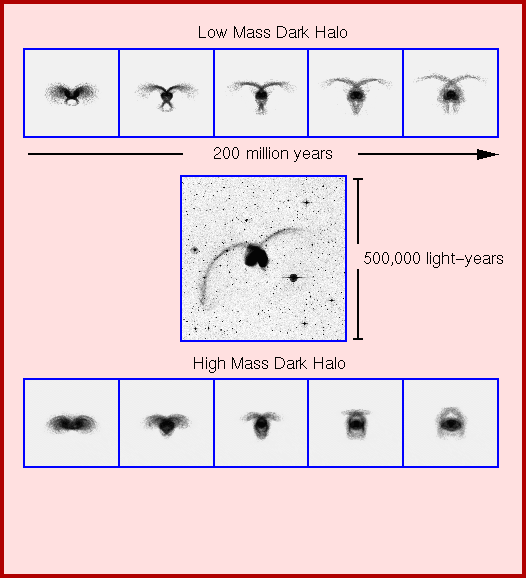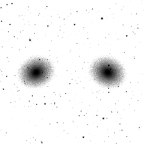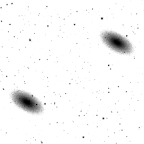
NGC 4038/4039 are perhaps the most famous pair of nearby interacting
galaxies known for their symmetrically placed tidal tails resembling insect
antennae. N-body simulations of the formation of the Antennae's tidal
tails allow us to set limits on the total amount of dark matter in the
interacting galaxies. Shown below are two simulations using different
amounts of dark matter in the galaxy models. The low mass model
only contains 4 times as much mass in dark matter as stars while the high
mass model contains 30 times as much dark matter. The low mass model
easily produces long tidal tails like the real pair while the high mass
model fails, producing only short, stubby features. Simulations using
intermediate masses show that long tails only arise when the mass
of dark matter is less than 10 times the mass of the stars.

Live Antennae
Here are two animations of the collision of the low mass model galaxies
- one from a view in the plane of the sky and one looking down onto the
orbital plane of the collision. The simulation spans about 2 billion
years.

Click to see the movie of the interaction from the
observer's point of view.

Click to see the movie of the interaction in the orbital
plane
John Dubinski



